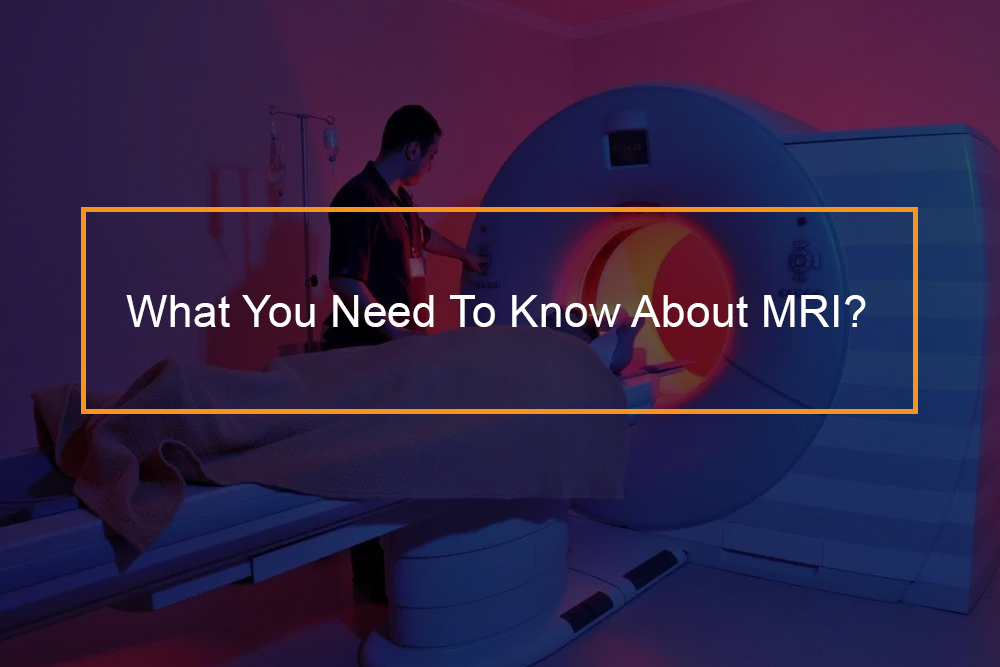
The Magnetic Resonance Imaging (MRI) is a type of scan that uses strong electromagnetic fields and radio waves to produce comprehensive pictures of the within the body. An MRI scanner is a large tube which contains powerful magnets. You lie inside the machine throughout the scan.
What is an MRI Scan?
Understanding MRI Scan
An MRI scan utilizes a large magnet, radio waves, and a computer system to develop a detailed, cross-sectional pictures of internal organs and structures.
The scanner itself usually looks like a big tube with a table in the middle, allowing the client to slide inside. An MRI scan varies from CT scans and X-rays, as it does not use potentially harmful ionizing radiation.
The Uses of the MRI
The progress of the MRI scan represents a huge turning point for the medical world. Physicians, scientists, and researchers are now able to examine the within the human body in intricate detail utilizing a non-surgical instrument.
Below are examples in which an MRI scanner is applicable:
- anomalies of the brain and spine
- tumors, cysts, and other abnormalities in numerous parts of the body
- breast cancer screening for women who deal with a high danger of breast cancer
- injuries or irregularities of the joints, such as the back and knee
- particular types of heart issues
- illness of the liver and other abdominal organs
- the examination of pelvic discomfort in women, with causes consisting of fibroids and endometriosis
- suspected uterine anomalies in women going through evaluation for infertility
This list is by no way exhaustive. The use of MRI technology is always expanding in scope and usage.
How Does an MRI Scan Work?
The majority of the body contains water particles, which include hydrogen and oxygen atoms. At the center of each hydrogen atom is an even smaller particle called a proton. Protons resemble small magnets and are sensitive to magnetic fields.
Once you lie under the powerful scanner magnets, the protons in your body line up in the same instructions, in the same method that a magnet can pull the needle of a compass.
Brief bursts of radio waves are then sent out to particular locations of the body, knocking the protons out of alignment.
Once the radio waves are switched off, the protons straighten. It sends out radio signals, which are picked up by receivers.
These signals supply info about the precise location of protons in the body.
They likewise help to compare the numerous kinds of tissue in the body, since the protons in various types of tissue realign at different speeds and produce unique signals.
In the very same method that millions of pixels on a computer screen can produce complicated images, the signals from the millions of protons in the body are combined to develop a detailed picture of inside the human body.
What Can I Anticipate Before my MRI Exam?
You might be asked to use a dress throughout the examination, or you might be allowed to wear your clothing if it is loose-fitting and has no metal fasteners.
Guidelines about consuming and drinking before an MRI test differs with the specific examination and with the imaging facility. Unless you hear otherwise, you may follow your regular daily routine and take food and medications as typical.
Some MRI assessments may need you to get an injection of contrast product into your bloodstream. The technologist,radiologist or a nurse can find out if you have allergies of any variation, e.g., an allergy to iodine or x-ray contrast product, drugs, food, or the environment, or if you have asthma. The contrast product most typically used for an MRI examination consists of a metal called gadolinium. Gadolinium is useful in clients with iodine contrast allergy. It is far less common for a client to have an allergic reaction to a gadolinium-based contrast product used for MRI than the iodine-containing contrast for CT. However, even if it is understood that the patient has an allergic reaction to the gadolinium contrast, it might still be possible to use it after appropriate pre-medication. The doctor will need approval from the patient under these circumstances. For more details on hostile reactions to gadolinium-based contrast representatives, please speak with the ACR Manual on Contrast Media.
You must likewise let the radiologist know if you have any severe health problems, or if you have had any current surgical treatments. Some conditions, such as severe kidney disease, might prevent you from being offered gadolinium contrast for an MRI. If you have a history of kidney illness or liver transplant, it will be needed to perform a blood test to identify whether the kidneys are operating adequately.
Women always need to inform their doctor if there is any possibility that they are expectant. From the 1980s, MRI has been used for scanning patients without any reports of any ill effects on pregnant ladies or their unborn children. Nevertheless, because the unborn infant will be in a strong electromagnetic field, pregnant females ought to not have this examination in the first three to four months of pregnancy unless the prospective take advantage of the MRI test is presumed to surpass the possible dangers. Pregnant women should not receive injections of gadolinium contrast product except when essential for medical treatment. See the MRI Safety page for additional information about pregnancy and MRI.
If you have claustrophobia (worry of enclosed spaces) or stress and anxiety, you might want to ask your doctor for a dose of a moderate sedative before your arranged evaluation.
Jewelry and other accessories need to be justify in the house, if possible or eliminated before the MRI scan. Because they can hinder the magnetic field of the MRI system, metal and electronic products are not allowed the examination space. Other than affecting the MRI images, these things can end up being projectiles within the MRI scanner room and might cause you and others neighboring harm. These items include:
- precious jewelry, watches, credit cards, and hearing aids, all of which can be damaged
- pins, hairpins, metal zippers, and comparable metal products, which can distort MRI images
- removable oral work
- pens, penknife, and glasses
- body piercings
Most of the times, an MRI test is safe for clients with metal implants, other than for a couple of types.
If you fall under these category of people,you shouldn’t go into the MRI scanning area:
- cochlear (ear) implant
- some kinds of clips used for brain aneurysms
- some types of metal coils put within capillary
- nearly all heart defibrillators and pacemakers
You must inform the technologist if you have medical or electronic gadgets in your body. These items might interfere with the test or possibly posture a threat, depending on their nature and the strength of the MRI magnet. Lots of implanted devices will have a flyer discussing the MRI risks for that specific device. If you have the brochure, it works to bring that to the attention of the radiographer before the test and bring it to your review in case the radiologist or technologist has any concerns. Some implanted devices require a short amount of time after positioning (typically six weeks) before being safe for MRI assessments.
Here are typical examples, although there are more:
- synthetic heart valves
- implanted drug infusion ports
- artificial limbs or metal joint prosthesis
- nerve stimulators implants
- plates, metal pins, screws, stents or surgical staples
If there is any question of their existence, an x-ray might be taken to spot and determine any metal objects. Primarily, metal items used in orthopedic surgical treatment pose no threat throughout MRI. However, a recently placed artificial joint may need using another imaging treatment.
Patients who may have metal things in certain parts of their bodies may likewise need an x-ray before an MRI scan. You should inform the radiologist of any shrapnel, bullets, or other pieces of metal that may be present in your body due to previous mishaps. Foreign bodies near and particularly lodged in the eyes are particularly crucial because they may move during the scan, perhaps causing loss of sight. Dyes utilized in tattoos may contain iron and might warm up throughout an MRI scan. However, this is rare. Tooth fillings and braces usually are not affected by the electromagnetic field, but they may distort images of the facial location or brain, so you ought to let the radiologist understand about them.
Parents or relatives who accompany clients into the scanning space likewise needs to eliminate metal things and notify the radiologist of any medical or electronic devices they might have.
What Happens During an MRI Scan?
The Process Of An MRI Scan
Throughout an MRI scan, you rest on a flatbed that’s moved into the scanner. You’ll move into the scanner either feet or head first, depending on what body region the radiographer is scanning.
A radiographer, trained in performing imaging investigations runs the MRI scanner. They guide the scanner using a computer, which is in a separate room, to keep it far from the magnetic field produced by the scanner.
You’ll have the ability to speak with the radiographer through an intercom, and they’ll have the ability to see you on a television monitor throughout the scan.
At specific times throughout the scan, the scanner will make loud tapping noises. It is the electrical present in the scanner coils that are switching on and off. You’ll be provided earplugs or headphones to wear.
It’s essential to keep as still as you can during an MRI scan. This MRI scan lasts 15 to 90 minutes, depending on the size of the location being scanned and how many images are taken.
What can I expect throughout my MRI scan?
The duration of the procedure will differ the average, however, is 45 minutes to one hour per body part. You will need to lie still during the real MR scanning. Depending upon the body part that the radiographer is analyzing, you might be instructed to hold your breath for as much as half a minute.
The magnet is always open on both ends. It has sufficient lighting, and there is a fan of patient comfort. There is likewise a two method intercom system for communication between patient and technologist. The part of the body undergoing scanning will be in the middle of the magnet.
Throughout the real imaging, you will hear a loud intermittent banging sound. You will be provided with headphones to lessen the noise during the procedure. The technologist will likewise supply you with an alarm button to notify the technologist of any discomfort you may experience at any point throughout the MRI test. Some MRI tests require an injection of vein MRI contrast. Notify the technologist if you experience any discomfort during the injection/infusion.
What can I Anticipate After my MRI Scan?
If the doctor uses a color injection, the IV is eliminated from the arm before you go home.
Allergy from gadolinium color is exceptionally unusual. Although, if you experience symptoms such as rash, hives, or shortness of breath, you ought to notify the technologist instantly if you are still at the imaging facility, or call your doctor or go to the nearby healthcare facility if you have currently justify the imaging center.
If sedation is needed (such as for claustrophobia), you will be sent home when awake and alert. If you get sedation, someone needs to drive your house.
How Can I Assist Prepare my Child for an MRI Scan?
MRI evaluations require that the client hold still for extended periods. We provide MRI-compatible CinemaVision goggles (available in few imaging centers) so that our young clients can watch films during their MRI procedure. Clients can either choose a motion picture from our movie list or bring one from the house. Seeing an entertaining motion picture helps kids remain comfy and still, and it lessens the need for anesthesia.
Who Can Have an MRI?
Magnetic resonance imaging (MRI) is safe, and many people can have the procedure. However, in some instances, an MRI scan might not be recommended. Before having an MRI scan, you ought to tell medical personnel whether:
- you might have any metal in your body
- you’re breastfeeding or pregnant
The powerful magnets used during the scan can impact any metal implants or fragments in your body.
MRI scans aren’t suitable for pregnant women.
Although they’re thought to be typically safe to utilize in later pregnancy (after three months), it’s not clear whether the strong magnetic fields have any long-term impacts on the developing baby.
Metal implants or fragments
Having something metal in your body does not always mean you can’t have an MRI scan. However, it’s crucial for medical staff performing the scan to be knowledgeable about it.
They can select a case-by-case basis if there are any risks, or if further steps need to be taken to make sure the scan is as safe as possible. For example, it might be possible to make a pacemaker or defibrillator MRI-safe or to monitor your heart rhythm throughout the treatment. You might require to have an X-ray if you’re unsure about any metal pieces in your body.
Examples of Metal Implants Include:
- A pacemaker– a small electrical gadget utilized to control an irregular heartbeat
- An implantable cardioverter-defibrillator (ICD)– a similar gadget to a pacemaker that utilizes electrical shocks to control heartbeats
- Metal plates, wires, screws or rods– utilized throughout surgery for bone fractures
- A nerve stimulator– an electrical implant utilized to treat long-lasting nerve discomfort
- A cochlear implant– a gadget similar to a listening device that you can surgically implant inside the ear
- A drug pump implant– utilized to treat long-term pain by providing painkilling medication directly to a section of the body, such as the lower back
- Brain aneurysm clips– little metal clips utilized to seal capillary in the brain that would otherwise be at risk of rupturing (breaking).
- Metallic debris in or near your eyes or blood vessels (common in individuals who do welding or metalwork for a living)
- Prosthetic (synthetic) metal heart valves
- Penile implants– utilized to deal with erectile dysfunction (impotence)
- Eye implants– such as little metal clips used to hold the retina in location.
- An intrauterine gadget (IUD)– a contraceptive device made of plastic and copper that fits inside the womb
- Artificial joints– such as those utilized for a hip replacement or knee replacement
- Dental fillings and bridges
- Tubal ligation clips– utilized in female sterilisation.
- Surgical clips or staples– used to close wounds after an operation.
Who Analyzes the Outcomes and How do I Get Them?
A radiologist, a doctor specially trained to monitor and translate radiology examinations, will analyze the images and send a signed report to your primary care or referring physician, who will share the outcomes with you.
Follow-up examinations might be needed. Your medical professional will discuss the precise reason why another test is required. Sometimes a follow-up test is done since a prospective problem needs more assessment with additional views or a unique imaging technique. A follow-up evaluation might likewise be required so that any change in a recognized irregularity can be kept an eye on with time. Follow-up evaluations are in some cases the best way to see if treatment is working or if a finding is stable or changed in time.
What are the Advantages and Disadvantages of MRI?
Lists of Advantages, Disadvantages and Side Effects of MRI
Believe it or not, an MRI has both benefits and risks; and that’s why we’ve rounded up these points to help you understand the scanning even better.
6 Advantages of MRI
An MRI is a noni-surgical imaging technique that does not include exposure to ionizing radiation.
- MRI can assist physicians to evaluate the structures of the brain and can likewise supply practical info (fMRI) in selected cases.
- MR pictures of the brain and other cranial structures are more precise and more in-depth than with different imaging approaches. This detailed feature makes MRI an invaluable tool in early diagnosis and evaluation of numerous conditions, including tumors.
- MRI enables the discovery of problems that might be obscured by bone with other imaging methods.
- The contrast material used in MRI examinations is less most likely to produce an allergic reaction than the iodine-based contrast materials used for conventional x-rays and CT scanning.
- A variant called MR angiography (MRA) offers comprehensive pictures of blood vessels in the brain– frequently without the need for a contrast product. See the MRA page to find out more.
- MRI can identify stroke at a very early stage by mapping the motion of water molecules in the tissue. This water movement, called diffusion, is hindered by the majority of strokes, typically within less than 30 minutes from the start of signs.
5 Major Disadvantages of MRI
The MRI assessment presents practically no danger to the average patient when the nurse follows proper safety standards.
- If the doctor uses sedation, there are dangers of excessive sedation. Nevertheless, the technologist or nurse will monitor your vital indications to decrease this risk.
- Although the strong magnetic field is not harmful in itself, implanted medical gadgets which contain metal may malfunction or cause problems during an MRI examination.
- Nephrogenic systemic fibrosis is currently acknowledged, but uncommon, complication of MRI believed to be triggered by the injection of high doses of gadolinium-based contrast product in clients with terrible kidney function. Careful evaluation of kidney function before considering a contrast injection decreases the risk of this very unusual issue.
- There is a minor danger of an allergy if the doctor injects the contrast product. Such responses are generally moderate and quickly controlled by medication. Let’s say you experience allergic symptoms, a radiologist or other physician will be readily available for immediate support.
- Manufacturers of intravenous contrast show mothers don’t need to breastfeed their children for 24-48 hours after they’ve received contrast product. However, both the European Society of Urogenital Radiology and American College of Radiology (ACR) note that the readily available data recommend that it is safe to continue breastfeeding after receiving intravenous contrast. For further info, please consult the ACR Manual on Contrast Media and its referrals.
Side Effects of MRI
It is very unusual that a client will experience adverse effects from an MRI scan. However, the contrast color can cause queasiness, headaches, and pain or burn at the point of injection in some individuals. Allergy to the contrast product is also seldom seen but possible and can cause hives or itchy eyes. Alert the specialist if any adverse reactions occur. Individuals who experience claustrophobia or feel uncomfortable in enclosed spaces, often express troubles with going through an MRI scan.









